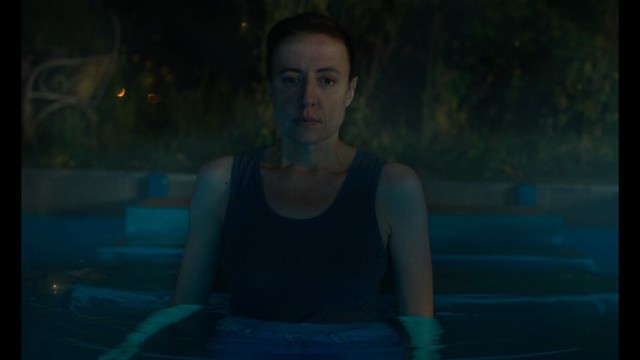







 The Zürcher Brothers' 'animal trilogy' concludes with The Sparrow in the Chimney, another chamber piece that takes place in a summer Swiss lakeside house bathed in golden sunlight, where a simmering tension builds in a confined space as the family plans for a birthday celebration. Ramon, wearing director and writer's hat (and Silvan taking producer's role), concocts a wordy, ensemble piece around the always great Maren Eggert (a great German actress and the lead in many of Angela Schanellec’s films) as Karen, an unloved and unappreciated mother of three trying to plan a birthday party for her unfaithful husband, Markus.
The Zürcher Brothers' 'animal trilogy' concludes with The Sparrow in the Chimney, another chamber piece that takes place in a summer Swiss lakeside house bathed in golden sunlight, where a simmering tension builds in a confined space as the family plans for a birthday celebration. Ramon, wearing director and writer's hat (and Silvan taking producer's role), concocts a wordy, ensemble piece around the always great Maren Eggert (a great German actress and the lead in many of Angela Schanellec’s films) as Karen, an unloved and unappreciated mother of three trying to plan a birthday party for her unfaithful husband, Markus.
The film starts with typical Zürcher fashion with static portraiture of two daughters: Johanna (Lea Zöe Voss) in her school, and Christina (Paula Schindler), the one who got away, on a plane coming home to attend her dad's birthday party. We see them behind the glass window from outside. This inside/outside theme is repeated throughout, with a sparrow flying out of the fireplace inside the house, leaving the trail of ash and leaving through the window early in the film, while the lake and its surroundings are taken over by the giant black commorants, ominously circling the sky- which beckon's the question: is outside any better?
Leon, the youngest of Karen's children, is seen prepping dinner for the whole extended family as they arrive, while Karen sleeps. Jule, Karen's sister and her husband and their baby daughter arrive. It is slowly revealed that the house Karen's family lives in belongs to Karen and Jule's deceased mother - the house the sisters grew up in, and the mother's shadow still looms large. It is also revealed that Karen's decision to move into the house after mother's death was not a favorable one for everyone else in the family.
Things are definitely not ok in Karen's household: the kids resent her. Leon is bullied in school and gets beat up a lot. Johanna, always an attention seeker, is testing her budding sexuality on any male figure around her. Christina has her reasons to be withdrawn. Markus is having an affair with Liv (Luise Heyer), a mentally unstable woman who took up residence in a cabin across from the house (used by the deceased mother and her lesbian lover) and has been watching over the family's dog.
The Sparrow in the Chimney is a densely scripted film where many things are said, yet nothing is said directly - the family dynamics here are not straightforward affairs and their feelings and thoughts are not communicated. Their cruelty to animals shows their frustrations with one another. We get the glimpse of their lives and past histories, but there's no big eureka moment until the end.
As with their last two films, Strange Little Cat and The Girl with the Spider, The Sparrow presents Zürcher's unique visual style - a blocking to create a claustrophobic atmosphere where everyone's cramped in the kitchen corridors, squeaking by each other and going in and out of static frames, and in and out of windows. The difference of The Sparrow here is that Zürcher's scope of visual filmmaking has grown and much more expansive. Karen's elaborate nightmare/hallucination sequence is something to watch, as it provides the inner workings of her fears, desires and secret wishes being manifested.
The Sparrow in the Chimney examines the familial trappings and yearning for freedom which might not be as ideal as it appears to be. Beautifully realized with sensuous visual details of inanimate objects to animals alike, the film cements the unique storytelling talents of the Zürchers.


